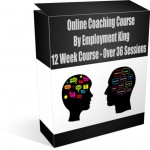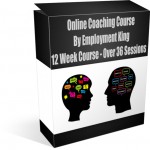NLP – Sleight of Mouth Patterns (SOMP)
People constantly live with limited self-beliefs, stopping them from moving forward with their lives, in the worst-case scenarios these limiting beliefs can turn into depression. SOMP help you reframe a person’s belief, the 14 SOMP patterns can be used in conversation to help give the client a new perspective without the client feel like they are in a coaching or canceling session. A SOMP doesn’t always resolve the problem but helps soften up the problem to make change easier. Some SOMP patterns can seem harsh or callous, which means you need to pick the right patterns for each client – you don’t need to use all 14 patterns on each client.
Limit the Limiting Beliefs
Beliefs define the relationship between a client’s value and their causes, indicators and consequences. Beliefs are typically expressed in the form of
Complex equivalence (A “equals”, “is, “is equivalent to” or “means” B)
Cause-effect (A “causes (because)”, “makes”, “leads to”, “produces”, “results in” B).
As an example, clients limiting belief maybe “I can’t lose weight because I don’t have willpower” (cause and effect)
Sleight of Mouth Pattern Examples
Redefine; change the representation of the belief
- What other meaning could the equation have?
Example SOMP Question or Statement: so what you are trying to say is that you don’t have the will power to lose weight but you can change your diet and eat healthier food
Consequence; consequences that can change beliefs
- What will happen to them if they continue to think this way?
Example SOMP Question or Statement: the longer you leave it the less willpower you will have
Intention; what is the positive intention?
- Why are they saying this?
- What is the secondary gain?
- What are they trying to get?
Example SOMP Question or Statement: it can be scary stopping a habit you have had for a while and we both agree it’s worth it to look great on your wedding day
Chunk Down; specific elements
- What specifically?
- What are examples of this?
- What are parts of this?
Example SOMP Question or Statement: what will give you the will power?
Chunk Up; generalisations
- For what purpose?
- What’s important about this?
- Exaggerate.
Example SOMP Question or Statement: overweight people are always unhappy
Counter Example; exceptions that challenge generalization
- Invert the belief.
- Make into a universal statement or question
- A causes B, not B causes not A.
Example SOMP Question or Statement: we have all met people who say they can’t lose weight and then do
Another Outcome; propose a different outcome
- What is another outcome you could shift to?
Example SOMP Question or Statement: the issue isn’t that willpower can win, it’s about you giving dieting a chance
Metaphor/Analogy; Use an analogy or metaphor that challenges the generalization defined by the belief
- What story will relate to their belief?
- Tell a metaphor or story about the solution.
Example SOMP Question or Statement: I adopted an overweight dog once that I believed would never lose weight, we started taking the dog on small walks and change his diet to a healthy diet, it was only a small thing really but before we do it the dog had lost loads of weight. The funny thing was we were told my the dog adoption shelter that the dog due to it’s bad health would only live for 12 months, but now 3 years later he is healthy and full of life.
Apply to Self; use key aspects of the belief to change the belief
- Don’t think about it; just use the word back on itself.
Example SOMP Question or Statement: you can’t lose weight until you believe you have the willpower to lose weight
Hierarchy of Criteria (Values) Re-assess the belief based on a more important criterion.
- What is a higher criteria (values)?
- Apply current criterion (value) to current sentence.
Example SOMP Question or Statement: isn’t it more important to think about your health than your weight
Change Frame Size; Re-evaluate the implication of the belief in the context of a longer (or shorter) time frame, a larger or shorter number of people (or from an individual point of view) or a bigger or smaller perspective.
- Something (larger or smaller) they haven’t noticed.
- Different frame, same behavior.
- Chunk up to Universal Quantifier.
Example SOMP Question or Statement: losing weight will give you a longer life….to spend with your grandchildren
Meta Frame; change the basis of the belief
- How is it possible they could believe that?
Example SOMP Question or Statement: you can’t lose weight but can’t you eat less food each day?
Model of the World; look at the belief from a different perspective
- Switch Referential Index.
- Is this true in everyone’s Model of the World?
Example SOMP Question or Statement: beating will power is telling yourself you do it
Reality Strategy; Re-assess the belief based on the fact that beliefs are based on specific perceptions
- How do they represent that belief?
- How do they/you know if it’s not true?
- Apply current criterion (value) to current sentence.
Example SOMP Question or Statement: how do you know willpower not laziness is stopping you from losing weight?
Ask we discussed one SOMP question or statement will not always change the persons belief, but what it will do is weaken the belief, allowing your client to have a change of focus, with this change we can work with the client to move them forward.
If you enjoyed reading this article you will also enjoy reading:







